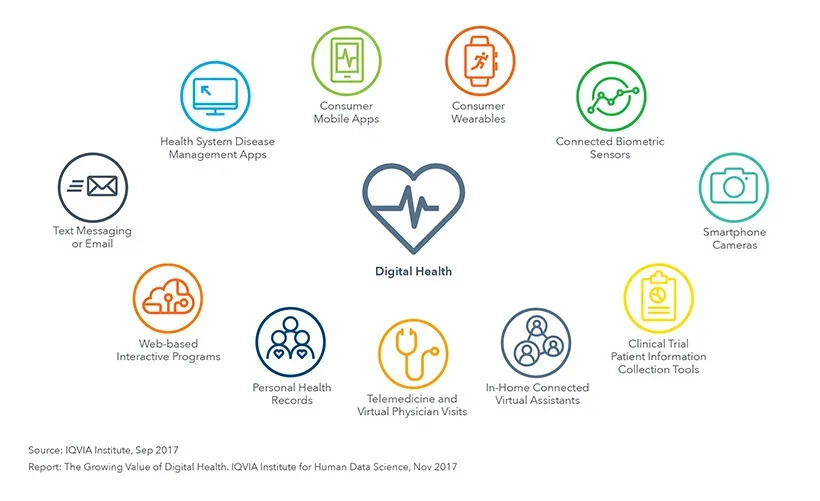Digital health tools have moved from novelty to a daily ally for people pursuing health goals. In an era where smartphones, wearables, and connected devices live on our wrists and in our homes, tracking, analyzing, and acting on health data is easier than ever. These tools span digital health apps, health monitoring devices, wearable health devices, and health tracking apps, delivering real-time feedback and personalized guidance. Used thoughtfully, they clarify priorities, boost motivation, and support sustainable lifestyle changes. By leveraging digital health apps, health monitoring devices, wearable health devices, health tracking apps, and fitness and wellness apps, you can tailor a practical plan.
Viewed through a broader technology lens, the landscape includes sensor-enabled devices, cloud analytics, and mobile interfaces that translate data into actionable steps. Following Latent Semantic Indexing principles, related terms such as health technology, mHealth tools, connected health devices, and wellness platforms help connect the topic to a wider web of searches. Together, these terms describe an ecosystem where monitoring, coaching, and data-driven guidance support everyday health decisions.
Digital Health Tools for Everyday Wellness: Choosing and Using Health Tracking Apps and Digital Health Apps
Digital health tools empower people to translate intentions into consistent actions. By combining digital health apps with health tracking apps and fitness and wellness apps, you can monitor sleep, activity, nutrition, and mood in one integrated view. These tools—whether on your phone or integrated with wearables—generate real-time feedback and historical trends that help you see what works.
When selecting tools, start with clear goals for sleep quality, daily activity, or stress management. Check device compatibility, data accuracy, privacy policies, and whether the platform supports easy data export or clinician sharing. Look for evidence-backed features, reliable sensors, and clear privacy protections to ensure your data stays secure while remaining useful for personal insights.
To make digital health tools part of a sustainable routine, limit yourself to a small core set—one digital health app and one health tracking app or fitness and wellness app—and configure dashboards that highlight the metrics that matter most to your goals. Use these insights to drive concrete plans, such as a weekly exercise target or a bedtime routine, turning data into lasting behavior change.
Wearable Health Devices and Health Monitoring Devices: From Data to Daily Action
Wearable health devices, such as smartwatches and fitness bands, continuously collect data on steps, heart rate, sleep, and activity. When this data feeds into digital health tools and health tracking apps, you gain real-time feedback that can prompt you to move more, improve sleep, or manage stress. Health monitoring devices—blood pressure cuffs, glucose meters, pulse oximeters—provide quantitative measurements at home that help you track trends over time.
Use the combined data to inform decisions and conversations with clinicians. Ensure you have privacy controls, and consider data interoperability so your metrics can be shared with your healthcare team. Validate critical readings where possible and treat trends as guidance rather than absolute numbers, especially when using consumer-grade devices.
To maximize impact, integrate device data into daily routines: set recurring sync times, align wearables with targeted workouts, and leverage fitness and wellness apps that translate metrics into actionable plans. A holistic view across wearables, health monitoring devices, and health tracking apps supports more informed decisions about activity, sleep, nutrition, and mental well-being.
Frequently Asked Questions
What are digital health tools and how do digital health apps and wearable health devices help with personal health management?
Digital health tools are software and hardware solutions that collect health data, analyze it, and guide healthier decisions. They include digital health apps, health monitoring devices, wearable health devices, health tracking apps, and fitness and wellness apps. Benefits include real-time feedback, personalized recommendations, easier conversations with clinicians, motivational nudges, and a holistic view of health when data from multiple sources is combined.
How do I choose the right digital health tools for my goals, and what should I consider about privacy, data sharing, and interoperability when selecting health monitoring devices or health tracking apps?
Start by clarifying your health goals (for example, improving sleep, increasing activity, or managing a condition). Then evaluate tools against these criteria: relevance of the metrics, data accuracy, compatibility with your phone and other devices, privacy and data security, ease of use, and cost. Look for evidence of effectiveness and the ability to export data for clinician review. Begin with one or two tools to avoid data overload, and choose options that you can share easily with your healthcare team.
| Aspect | Key Points |
|---|---|
| What digital health tools are. | Software and hardware solutions designed to collect health-related data, interpret it, and help you make informed decisions. They range from mood-tracking apps to sophisticated wearables and home medical devices. |
| Core categories. |
|
| Benefits. |
|
| Choosing the right tools. |
|
| Best practices. |
|
| Evidence and caveats. |
|
| Practical daily life integration. |
|
| Common challenges. |
|
| Future directions. |
|
Summary
A look at digital health tools shows how apps, devices, and wearables integrate to support everyday health goals. When used thoughtfully, they provide real-time feedback, personalized guidance, and data-informed conversations with clinicians. As technology advances, digital health tools become more seamless, privacy-conscious, and capable of sustaining long-term behavior change while connecting users with care that matters. Overall, these tools help users stay proactive, informed, and engaged in managing their health journey.

